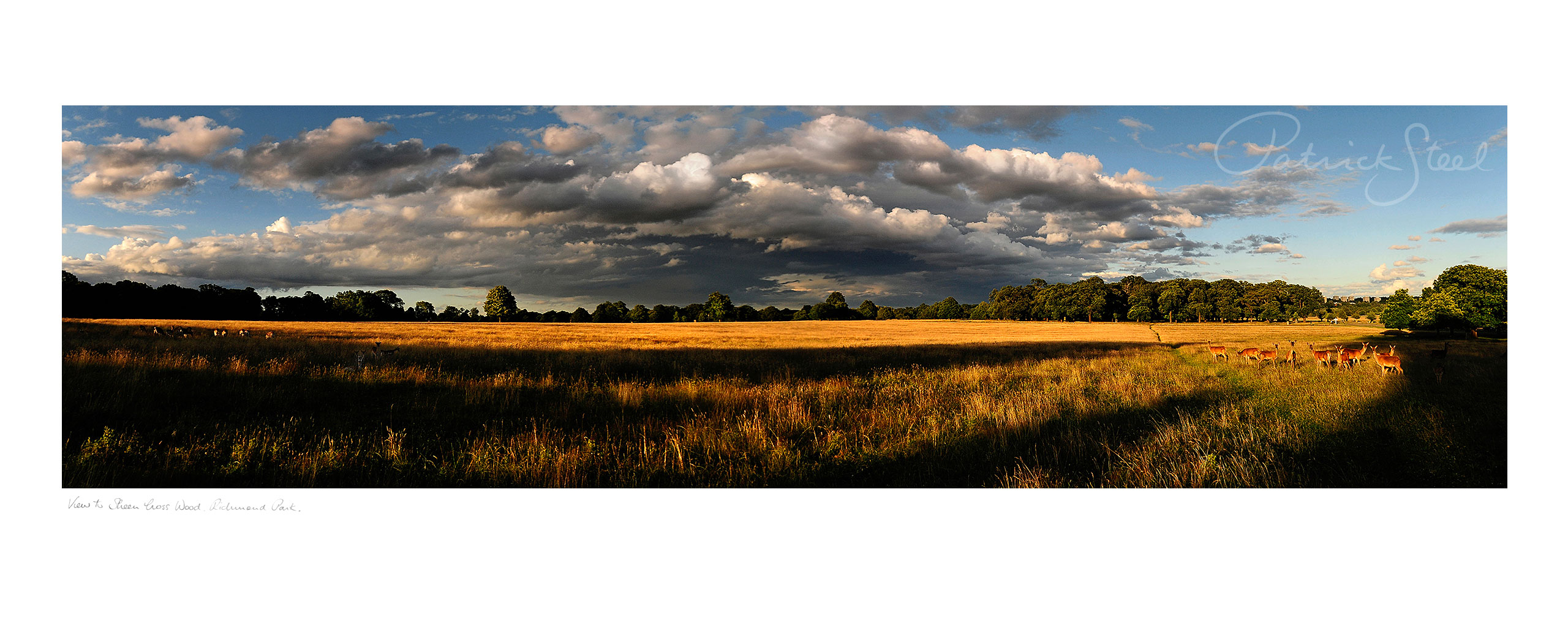Description
A landscape photograph named ‘Meadowlands I’, photographed by photographer Patrick Steel from Richmond Hill, Richmond upon Thames
The listed prices include: Dry mounting onto acid free board, window mounting, titled and signed in pencil and wrapped in a protective sleeve of polypropylene acetate film, ready for framing
Limited edition of only: 50
Sizes: Nine to choose from, please select from the drop-down menu above. Larger bespoke sizes available on request
Print type: Fine Art Giclée / Kodak Pro Lustre 270gsm Endura Paper
Watermarks: Patrick Steel’s watermark will not be present on a purchased print
Copyright: © Patrick Steel
✓ Limited edition photograph
✓ Direct from the Artist
✓ Hand signed by Patrick Steel
✓ Free worldwide delivery
✓ Tracked & signed for delivery
✓ Paypal protection
✓ Secure SSL payment protection
✓ Excellent customer care and service
Information: Richmond Hill in Richmond, London is a hill that rises gently on its northern side from the ancient Thames meadowlands around the site of Richmond Palace up to and slightly beyond the Richmond Gate entrance to Richmond Park, the former royal hunting grounds enclosed by Charles I. The descent southwestwards from this point back down to the upstream meadows is noticeably steeper, although the down gradient is less marked on its southerly and easterly progress through the park itself. Richmond Hill is also the name of the road (now classed as the B321) that runs from Richmond town centre to the top of the hill, and is one-way up the hill along its northern part
This renowned hill offers the only view in England to be protected by an Act of Parliament – the Richmond, Ham and Petersham Open Spaces Act passed in 1902 – to protect the land on and below Richmond Hill and thus preserve the fine foreground views to the west and south. Immortalised in paintings by Sir Joshua Reynolds and J. M. W. Turner, it was described by Sir Walter Scott as “an unrivalled landscape”. It was this view that inspired the name of Richmond, Virginia, after colonial city founder William Byrd II noticed a curve in the James River that remarkably resembled this meander of Thames
The scenic panorama may be viewed from Terrace Walk, laid out near the top of the hill in the 18th century. This promenade surmounts the Terrace Gardens and both are Grade II listed in Historic England’s Register of Parks and Gardens of Special Historic Interest in England
As the town of Richmond developed from its founding in the early 16th century, after Henry VII had established Richmond Palace, the attributes of the hill naturally attracted desirable residential and commercial development – with the result that many substantial properties came and went on the hill over the centuries, some of them with famous or notable persons as owners or occupiers. That situation is still in vogue today.
The original homes on Richmond Hill were built in what is now The Vineyard, including Clarence House, Halford House, Michel’s Almshouses and Vineyard House
The Petersham Hotel: The Petersham stands between what remains of Richmond Hill’s Common and Petersham Common. These were originally contiguous and grazing animals would stray across the manor boundaries. So in 1639, a strip of land on the Richmond side of the boundary was granted to one Francis Barnard on condition that he made and maintained ‘a sufficient fence with a gate and stile’ between the two commons. This strip of land was later split into three sections. At the top end the villa called ‘The Wick’ replaced the Bull’s Head tavern in 1775
At the bottom end were stables (now the Rose of York pub). In the centre a cottage, first built about 1650, was rebuilt as a substantial house in the 1770’s. It got the name of Nightingale Cottage from the nightingales on Richmond Hill; famous for their singing (Wordsworth wrote a sonnet about them). Nightingale Lane, originally a straight path down the hillside, acquired its present alignment in 1810 when the Richmond Vestry leased the lower part of the Hill Common to the then owner of Nightingale Cottage to extend his garden. This leased land, which cannot be built on, is now the hotel car park





